
All categories
Featured selections
Trade Assurance
Buyer Central
Help Center
Get the app
Become a supplier

(970 products available)








































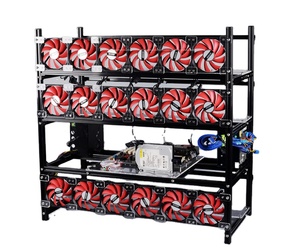
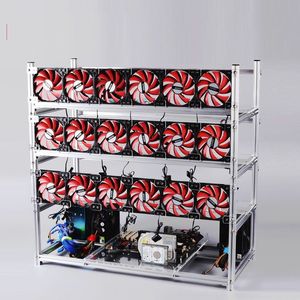
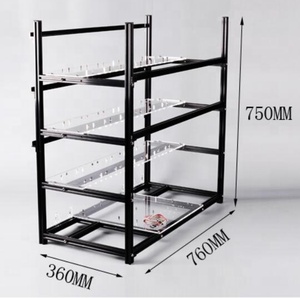
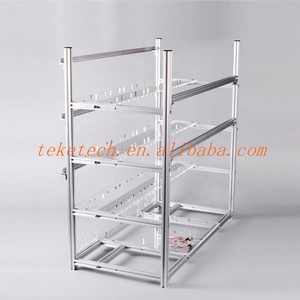
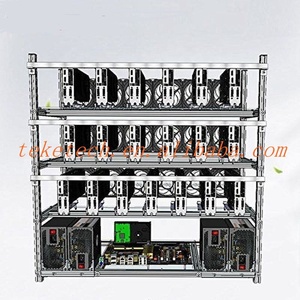
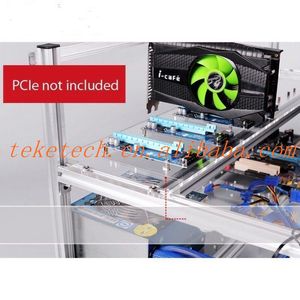
A crypto mining rig is a computer system used to mine cryptocurrency. This is the process through which new units of digital currency are created and transactions between users are verified and secured. The two common methods for mining are crypto proof-of-work and proof-of-stake.
ASIC (Application-Specific Integrated Circuit) Rigs:
These mining rigs are created for a specific function. An ASIC rig's hardware, software, and mining power can be effectively and efficiently adjusted for a particular cryptocurrency mining procedure. It cannot be used to mine any other cryptocurrency apart from the one it has been designed for. Despite their high power consumption, ASIC mining machines are the fastest mining devices available. They have excellent hash rates and are able to mine cryptocurrency quickly and efficiently. Hash rate is a measure of how quickly a mining rig can solve complex mathematical problems to validate transactions and earn rewards.
GPU (Graphics Processing Unit) Rigs:
Graphics processing units (GPUs), also known as graphic cards, mine a variety of cryptocurrencies. GPU rigs are flexible and can mine different cryptocurrencies, but not those specifically designed for ASICs. For most cryptocurrency mining rigs, GPUs are the preferred components. Although a mining rig can utilize several types of GPUs, each GPU must be the same brand and type if one plans to use multiple GPUs. Otherwise, it can create problems for the mining rig. Mining different cryptocurrencies with a mining rig depends on the algorithm it uses and how many GPUs are on the rig.
CPU (Central Processing Unit) Rigs:
A CPU mining rig relies on the computer's central processing unit to mine crypto. It used to be possible to mine Bitcoin using just a CPU, but it is no longer feasible. While it is still possible to mine some lower-cap altcoins (alternative cryptocurrencies to Bitcoin) with a CPU, mining with a CPU is more about supporting a network and less about making a profit.
Cloud Mining:
Cloud mining is when someone rents mining hardware/rigs in a mining facility (data center) that has good internet connection and cooling. This kind of mining is the most convenient because no one has to physically set up and maintain the mining rig. It is also more efficient and cost-effective than DIY rigs. The mining farm already has everything required to mine efficiently. However, cloud mining comes with the downside of less control and the possibility of scams. Thoroughly researching the cloud mining service provider is very important. Some cryptocurrency cloud mining companies offer the option of owning the mining rigs or just renting them to mine Bitcoin and other cryptocurrencies.
Pool Mining:
Pool mining is when many miners come together and pool their resources so they can mine Bitcoin and other cryptocurrencies more efficiently. By combining their computational power, they increase the chances of successfully mining blocks and earning rewards. Pool mining allows people with small rigs or limited resources to participate in the mining process and share in the rewards, thus making it more accessible and decentralized. A pool mining software is then used to connect the mining rig to the pool.
Certain fundamental aspects are crucial for the success of mining operations, regardless of whether a rig is built or purchased.
Quality Power Supply:
A reliable and efficient power supply unit (PSU) is critical for any rig. It powers all components and must have enough wattage and stability to support the whole system. Miners also prefer modular PSUs that allow connecting only the required cables for a clean build and better airflow.
Cooling:
Mining crypto, especially Bitcoin, even with the new ASICs, generates a lot of heat. Therefore, good cooling is necessary to keep the rig running at optimal temperatures. Efficient cooling systems can reduce hardware temperature, increase energy efficiency, and most importantly, prolong the miner's lifespan. A simple crypto mining rig setup consists of case fans that provide passive cooling for the entire rig. However, in some instances, fans may not be enough to keep mining machines running at safe temperatures, especially in hot climates. Some crypto miners use air conditioning to reduce the room temperature. Alternatively, axially ducting the mining rig exhaust to outside the room can provide some relief.
Rig Frame:
The rig frame is the mining rig structure. It holds all the components together and comes in cases or open frames. While cases provide better cooling for a PC crypto mining setup, they also allow miners to hide the rig and keep it out of sight. They, however, have their downsides, including restricting airflow and hiding the hardware when troubleshooting an issue. On the flip side, using an open-frame mining rig provides better airflow and accessibility. The ever-changing crypto market forces manufacturers to constantly upgrade mining hardware to stay competitive. Using an open-frame rig makes upgrading components such as GPUs more accessible.
Motherboard:
A mining rig motherboard is an essential component that connects all the mining machine parts. When looking for a motherboard to build the rig, compatibility with the crypto mining CPU and having enough PCI-E slots for the number of GPUs is crucial. One can also upgrade a mining rig motherboard by using a Raspberry Pi. While it may not replace a standard motherboard, it is an excellent tool for remote management and monitoring of crypto mining rigs.
Crypto Mining Software:
After setting up a mining rig, the next step is to install mining software. Ideally, this is a program that connects to the blockchain to verify transactions and mine crypto. Mining software varies depending on the crypto to be mined, hardware, operating system, and preferences. Software is also required to optimize mining operations for better profitability and efficiency.
Mining Cryptocurrencies:
Crypto miners use these rigs to mine cryptocurrencies like Ethereum and Bitcoin. Crypto mining rigs solve complex math problems. In return, they earn cryptocurrency as a reward. The mining process secures Blockchains and verifies crypto transactions.
Pooling Resources:
Crypto mining rigs can be joined together in pools. This allows miners to pool their resources and combine their computing power. By pooling resources, miners can work together to mine cryptocurrencies more efficiently and share the rewards evenly. Mining pools have become a common way for miners to increase their chances of earning cryptocurrency rewards.
Staking:
some rigs are designed to support staking mechanisms of certain Blockchains. This allows crypto holders to lock up their coins in crypto rigs. In return for validating transactions and securing the network, they earn rewards.
Running a Node:
Crypto mining rigs can run a full node. A full node downloads the entire Blockchain and helps maintain its integrity. By running a node, one helps support the network and ensure it remains decentralized and secure.
Testing and Development:
Developers use them to test new features and improvements before releasing them to the public. This allows developers to ensure that any changes they make will not negatively impact the performance or stability of the software.
Additionally, using a rig for testing and development allows developers to experiment with different configurations and settings in a controlled environment. This ensures that any updates are thoroughly tested before being implemented on the network.
Wholesale buyers of mining rigs should consider what they plan to mine before purchasing. Some specific mining rigs are designed to mine particular cryptocurrencies, while others are more versatile. In addition, they need to learn as much as they can about the different types of mining machines and their profitability before purchasing.
Newer versions often have better hardware specifications, but refurbished or used mining rigs may be acceptable if they are in good condition. Buyers should inspect the equipment to ensure it has no damages or missing parts, such as fans or graphic cards. If any parts are missing, the crypto mining rig will not work. Moreover, mining machines work better with higher-quality GPUs. Ideally, the machine should have at least four GPUs, but more is better. The rule of thumb is the more powerful the machine, the faster it can mine.
Mining machines require stable and fast internet connectivity to operate optimally. Assess the machine's internet connectivity options and ensure it can connect to a stable network. Consider power options and where buyers will mine. Some rigs are portable and can be moved to different locations, but others are not portable. Mining machines use a lot of power, so buyers should assess electricity costs in their area before buying. Owners will need to assemble some rigs, while others come fully assembled. Fully assembled rigs are ready for mining, while owners of partially assembled rigs will need to put it together.
Q1: What is the ideal memory size for a mining PC?
A1: A mining computer doesn't need a large memory. Since mining doesn't need much memory, 4 to 8 gigabytes (GB) of RAM is enough.
Q2: What is the role of the operating system in mining?
A2: The mining rig OS manages all the mining hardware. It runs mining software and connects to the internet to join a mining pool or get paid.
Q3: Does a mining rig need a motherboard?
A3: Yes, the motherboard is essential to the mining rig because it links all the components and allows the miners to perform their operations.
Q4: What kind of power supply is needed for a rig?
A4: A mining rig requires a high-efficiency (80 Plus Gold or Platinum) power supply unit (PSU) that can deliver stable power to all components.